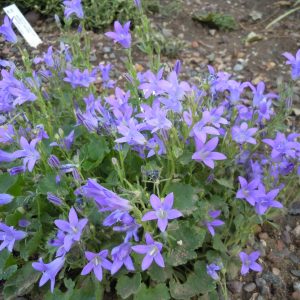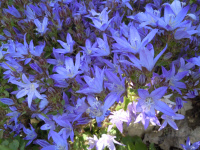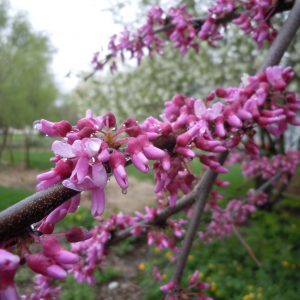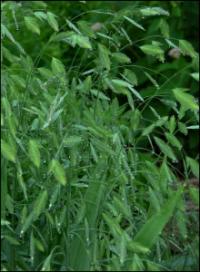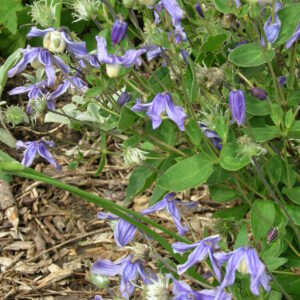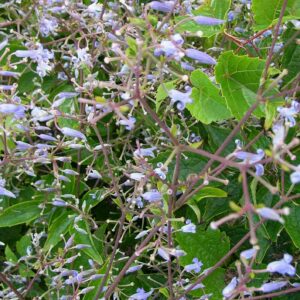Black Walnut Tolerant
Showing 25–32 of 106 results
-
Campanula portenschlagiana Dalmatian bellflower Z 4-8
Purple, upfacing bells for months in mid to late summer
Purple, upfacing bells for months in mid to late summer
Size: 4-6” x 20”
Care: full sun-part shade in moist well-drained soil
Native: Northern Yugoslavia
Awards: England’s Royal Horticultural Society Award of Merit. Top rated Chicago Botanic Garden & Elisabeth Carey Miller Botanical Garden Great Plant Pick.Campanula is Latin meaning “little bell.” 1st described in Systema Vegetabilium 5: 93 in 1819 by one of its discoverers, Franz Edler von Portenschlag-Ledermayer (1772-1822).
-
Campanula poscharskyana Adriatic bellflower, Serbian bellflower Z 4-8
Riot of lilac colored star-shaped blooms May – June over this short, trailing mound of leaves.
Riot of lilac colored star-shaped blooms May – June over this short, trailing mound of leaves.
Size: 6" X 24" spreads
Care: Sun to part shade in moist well-drained soil.
Native: Mountains of Eastern Europe
Awards: Top rated by the Chicago Botanic Garden. Elisabeth Carey Miller Botanical Garden Great Plant PickCampanula is Latin meaning “little bell.” Collected before 1822. Named for 19th century German plantsman, Gustav Poscharsky.
-
Campanula rotundifolia Harebell, Bluebell of Scotland Z 3-8
Its delicate appearance conceals its hardy constitution. Dainty bluish-lilac bells to 12” stems on bushy round ground-hugging foliage. Blooms from June to October and occasionally November. Perfect for rock gardens and borders.
OUT OF STOCK
Its delicate appearance conceals its hardy constitution. Dainty bluish-lilac bells to 12” stems on bushy round ground-hugging foliage. Blooms from June to October and occasionally November. Perfect for rock gardens and borders.
Size: 9-12" x 12"
Care: Sun to part shade in moist well-drained soil
Native: Europe, Siberia and North America, including Wisconsin
Wildlife Value: Walnut and deer tolerantLakota ate the leaves raw and cooked and made an infusion of the roots to remedy earaches. Sir Walter Scott immortalized the Bluebell of Scotland in Lady of the Lake. Also a subject of Emily Dickinson’s poetry.
-
Cercis canadensis Red bud, Judas tree. Z 4-8
In spring when we need a Dionysian jolt from winter’s hibernation the Red bud’s flowers burst open. Shameless fuchsia buds appear along the tree’s stems, before the leaves unfurl. As spring turns to summer, glossy medium green hearts, the shape of each leaf, replace the buds. Vase shaped, fast growing and blooming as a young tree.
OUT OF STOCK
In spring when we need a Dionysian jolt from winter’s hibernation shameless fuchsia buds appear along the tree’s stems, then Red bud’s flowers burst open before the glossy leaves unfurl.
Size: 20-30’ tall and 25-35’ wide
Care: sun to part shade and moist well drained soil.
Native: between NY northwest to Wisconsin, Florida and southwest to New Mexico. Oklahoma adopted it as its state tree.
Wildlife Value: Spring Azure, Henry’s Elfin & Great Purple Hairstreak butterflies drink flowers’ nectar. Immune to the toxin Juglone from Walnut trees.1st described by French explorer and botanist Joseph Pitton Tournefort in 1700 in Institutiones rei herbariae and he named it Siliquastrum canadense. The tree went through six different names until 1737 when Linnaeus renamed it Cercis canadensis. Collected by Colonial nurseryman John Bartram. (1699-1776) George Washington planted this at Mount Vernon. Cherokee and Delaware steeped Red bud roots and bark in water for cures of fever, stuffiness, whooping cough and vomiting. Cherokee children ate the flowers. French Canadians added them to salads.
-
Chasmanthium latifolium Northern Sea oats Z 5-9
Graceful, pendulous oat-like spikes
In August – December Northern sea oats bear pendulous panicles of oat-like spikelets, emerging green and turning bronze. They hang on all winter.
Size: 36" x 24"
Care: full sun to part shade in any soil
Native: Eastern U.S., New Jersey to Texas
Wildlife Value: attracts butterfliesIntroduced by Michaux (1746-1802) extraordinary French plant hunter, who searched much of eastern No. America for plants. Indians ate the seeds for food. Used ornamentally since Victorian times for fresh and dried arrangements.
-
Clematis integrifolia Z 3-7
Summer, real true blue and sometimes white, pendant flowers measuring 2" across on this short, non-vining Clematis
OUT OF STOCK
Summer, beautiful true blue and sometimes white, pendant flowers measuring 2” across on this short, non-vining Clematis
Size: 24" x 24"
Care: Sun to part shade in humusy, well-drained soil. Prune to near ground in early spring.
Native: Central EuropeThe genus Clematis was named by Dioscordes, physician in Nero’s army, from “klema” meaning climbing plant. Sixteenth century English herbalist John Gerard called Clematis “traveler’s joy” because of the joy given to travelers by the beauty of the flowers. This species collected in Hungary by 1573. English herbalist Gerard grew this plant by the late 1590’s.
-
Clematis stans Japanese clematis Z 4-8
soulful blue starry nodding bells
OUT OF STOCK
Fragrant, smelling of sweet violets, soulful blue starry nodding bells with petals that flip up at the ends (recurved) Blooms August – September. Ships only in spring
Size: 30" x 24"
Care: sun to part shade in moist well-drained soil
Native: JapanStans means “upright” as this is a bush, rather than a vine. (OK, we’ve put this in the vine category and it’s not a vine. But most people think of Clematis as vines and we didn’t want you to miss it.) In Japan called “Kusa-botan.” Collected by Ernest Henry ‘Chinese’ Wilson before 1910.
-
Clematis tangutica Russian virgin bower Z 4-9
Small yellow flowers bloom for months
OUT OF STOCK
Small yellow flowers bloom for months, from July to September, then turn into ornamental spidery seed heads.
Size: 15-20’ x 6-10’
Care: Sun - part shade in moist well-drained to well-drained soil. Prune close to the ground in spring.
Native: NW China and TurkestanThe genus Clematis was named by Dioscordes, physician in Nero’s army, from klema meaning “climbing plant.” Sixteenth century English herbalist John Gerard called Clematis “traveler’s joy” because of the joy given to travelers by the beauty of the flowers. This species, C. tangutica introduced to western cultivation in 1898 when it was sent to Kew Gardens from St. Petersburg, Russia, after its discovery in Tibet.
**LISTED AS OUT OF STOCK BECAUSE WE DO NOT SHIP THIS ITEM. IT IS AVAILABLE FOR PURCHASE AT OUR RETAIL LOCATION.

